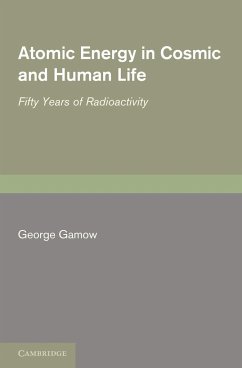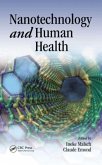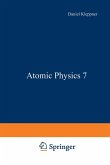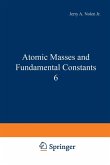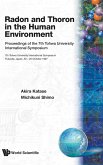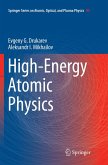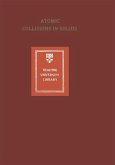- Broschiertes Buch
- Merkliste
- Auf die Merkliste
- Bewerten Bewerten
- Teilen
- Produkt teilen
- Produkterinnerung
- Produkterinnerung
First published in 1945, in the aftermath of the bombing of Hiroshima and Nagasaki, this book offers an account of the problem of atomic energy.
Andere Kunden interessierten sich auch für
![A Student's Guide to Atomic Physics A Student's Guide to Atomic Physics]() Mark FoxA Student's Guide to Atomic Physics52,99 €
Mark FoxA Student's Guide to Atomic Physics52,99 €![Nanotechnology and Human Health Nanotechnology and Human Health]() Ineke Malsch / Claude Emond (Hrsg.)Nanotechnology and Human Health208,99 €
Ineke Malsch / Claude Emond (Hrsg.)Nanotechnology and Human Health208,99 €![Atomic Physics 7 Atomic Physics 7]() Atomic Physics 777,99 €
Atomic Physics 777,99 €![Atomic Masses and Fundamental Constants 6 Atomic Masses and Fundamental Constants 6]() Atomic Masses and Fundamental Constants 640,99 €
Atomic Masses and Fundamental Constants 640,99 €![RADON & THORON IN THE HUMAN ENVIRONMENT RADON & THORON IN THE HUMAN ENVIRONMENT]() Akira Katase Shimo & MichikuniRADON & THORON IN THE HUMAN ENVIRONMENT229,99 €
Akira Katase Shimo & MichikuniRADON & THORON IN THE HUMAN ENVIRONMENT229,99 €![High-Energy Atomic Physics High-Energy Atomic Physics]() Evgeny G. DrukarevHigh-Energy Atomic Physics76,99 €
Evgeny G. DrukarevHigh-Energy Atomic Physics76,99 €![Atomic Collisions in Solids Atomic Collisions in Solids]() Sheldon DatzAtomic Collisions in Solids39,99 €
Sheldon DatzAtomic Collisions in Solids39,99 €-
-
-
First published in 1945, in the aftermath of the bombing of Hiroshima and Nagasaki, this book offers an account of the problem of atomic energy.
Produktdetails
- Produktdetails
- Verlag: Cambridge University Press
- Seitenzahl: 182
- Erscheinungstermin: 11. Februar 2011
- Englisch
- Abmessung: 203mm x 133mm x 10mm
- Gewicht: 212g
- ISBN-13: 9781107402089
- ISBN-10: 1107402085
- Artikelnr.: 33626348
- Herstellerkennzeichnung
- Libri GmbH
- Europaallee 1
- 36244 Bad Hersfeld
- gpsr@libri.de
- Verlag: Cambridge University Press
- Seitenzahl: 182
- Erscheinungstermin: 11. Februar 2011
- Englisch
- Abmessung: 203mm x 133mm x 10mm
- Gewicht: 212g
- ISBN-13: 9781107402089
- ISBN-10: 1107402085
- Artikelnr.: 33626348
- Herstellerkennzeichnung
- Libri GmbH
- Europaallee 1
- 36244 Bad Hersfeld
- gpsr@libri.de
George Gamow (1904-1968), was a Russian-born American nuclear physicist and cosmologist who was one of the foremost advocates of the big-bang theory, according to which the universe was formed in a colossal explosion that took place billions of years ago. Gamow attended Leningrad (now St. Petersburg) University, where he studied briefly with A.A. Friedmann, a mathematician and cosmologist who suggested that the universe should be expanding. At that time Gamow did not pursue Friedmann's suggestion, preferring instead to delve into quantum theory. After graduating in 1928, he traveled to Göttingen, where he developed his quantum theory of radioactivity, the first successful explanation of the behaviour of radioactive elements. In 1934, after emigrating from the Soviet Union, Gamow was appointed professor of physics at George Washington University in Washington, D.C. There he collaborated with Edward Teller in developing a theory of beta decay (1936), a nuclear decay process in which an electron is emitted. In 1954 Gamow's scientific interests grew to encompass biochemistry. He proposed the concept of a genetic code and maintained that the code was determined by the order of recurring triplets of nucleotides, the basic components of DNA. His proposal was vindicated during the rapid development of genetic theory that followed. Gamow held the position of professor of physics at the University of Colorado, Boulder, from 1956 until his death. He is perhaps best known for his popular writings, designed to introduce to the non-specialist such difficult subjects as relativity and cosmology. His first such work, Mr. Tompkins in Wonderland (1939), gave rise to the multivolume Mr. Tompkins series (1939-67). Among his other writings are One, Two, Three...Infinity (1947), The Creation of the Universe (1952), A Planet Called Earth (1963), and A Star Called the Sun (1964).
1. Modern alchemy
2. How the stars use atomic energy
3. How can man use atomic energy
Plates.
2. How the stars use atomic energy
3. How can man use atomic energy
Plates.
1. Modern alchemy
2. How the stars use atomic energy
3. How can man use atomic energy
Plates.
2. How the stars use atomic energy
3. How can man use atomic energy
Plates.

